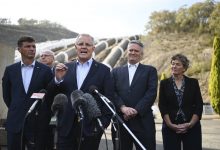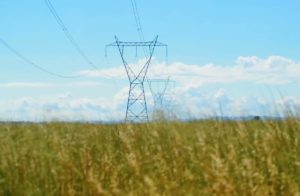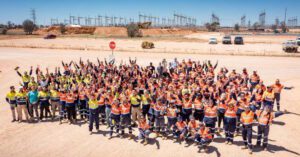The detailed modelling underpinning the investment in the massive Snowy 2.0 pumped hydro scheme confirms the worst fears of many in the industry: it will likely cause wholesale prices to rise in the medium to long term, it will sustain the business models of coal generators, and it will put a huge dent in the battery storage industry.
The modelling, quietly posted on the Snowy Hydro website after the blazing headlines generated from the $1.4 billion injection by the Scott Morrison Coalition government, confirm that the investment is focused more on protecting the future of the government-owned utility than it is about broader benefits to the market.
Snowy Hydro believes the project is critical to its future, but many critics have questioned whether the massive Snowy 2.0 project is the best, cheapest and smartest storage solution for a grid that will be increasingly decentralised.
The most shocking revelation, however, is that in the “base case” modelling, built around current policy settings, wholesale prices on the National Electricity Market would be higher than they otherwise would be in the medium to long term.
This is in sharp contrast to the messaging put out by the government and the utility a fortnight ago, promising that prices will fall by up to 10 per cent. It was reinforced by Morrison, wearing a cap emblazoned with “let’s get pumped”.
 As this graph above reveals, the 10 per cent fall will be brief, coming soon after the planned opening of Snowy 2.0 in mid 2025, and coinciding with increased generation and storage built to cover the closure of the Liddell coal generator, and for the Victoria and Queensland renewable schemes.
As this graph above reveals, the 10 per cent fall will be brief, coming soon after the planned opening of Snowy 2.0 in mid 2025, and coinciding with increased generation and storage built to cover the closure of the Liddell coal generator, and for the Victoria and Queensland renewable schemes.
From the late 2020s, Snowy 2.0 will make no difference to wholesale prices, the modelling predicts, and from the early 2030s it is likely to push them higher. (See the blue line as opposed to the black line).
That’s because Snowy 2.0 business model demands that it will only sell at peak times, and only at a fraction cheaper than the current gas generators that control the price at such times. The modelling shows it will look to sell around $100/MWh, or more.
The document also confirms that the project is focused on Snowy Hydro’s self-interest. Without Snowy 2.0, the company will likely struggle to compete in an increasingly competitive and decentralised world and it fears its existing assets will be “crowded out”.
“Increasing demand for firming product may be offset by market over-supply of firming technology, causing competitive downward pressure on prices and potential decrease in market power,” it warns.
Instead, Snowy Hydro wants to do the crowding out of other investments, and retain the market power.
Its document makes it clear that it will capture most of the market benefits, and the biggest loser from Snowy 2.0 will be the battery storage market.
“The entry of Snowy 2.0 delays batteries,” it says. This graph below illustrates how. The green shows the reduction in battery storage capacity it expects as a result of Snowy 2.0. The other big loser is combined cycle gas.
 Snowy defends this prediction on the basis that battery storage is more expensive, particularly for storage of up to four hours (although its estimate of battery costs at more than $2,000/kWh appears to defy current market realities. Also, its modelling does not seem to contemplate a mixture of battery storage and rival pumped hydro projects for longer durations.)
Snowy defends this prediction on the basis that battery storage is more expensive, particularly for storage of up to four hours (although its estimate of battery costs at more than $2,000/kWh appears to defy current market realities. Also, its modelling does not seem to contemplate a mixture of battery storage and rival pumped hydro projects for longer durations.)
The updated modelling also confirms previous observations – including its own earlier modelling and that of the Australian Energy Market Operator – that the existence of Snowy 2.0 is likely to underpin existing coal generators because it will “maintain the economics of baseload supply.”
It does this by increasing demand – by up to 2,000MW – when pumping, and this can be sourced from wind and solar, or coal. It makes money by trying to buy this cheaply, and then sell at higher prices set by gas generators. One of the reasons prices will rise over the longer term because it will deliver peak prices only “slightly lower” than gas generators.
Indeed, it reveals that Snowy 2.0 will not facilitate any significant increase in variable renewables until the mid to late 2030s, when more coal generation has retired. By then, it says, around 4GW of wind and solar will be helped into the grid (see graph above).
 And because the economics of coal is reinforced, and no significant amount of wind or solar is encouraged, then Snowy 2.0 won’t have any impact on emissions either.
And because the economics of coal is reinforced, and no significant amount of wind or solar is encouraged, then Snowy 2.0 won’t have any impact on emissions either.
“The levelling-off in emissions reduction post-2030 is due to the remaining coal plant operating at higher capacity factor and increasing gas plant development and operation as the limits of what battery storage can economically provide are reached,” the modelling report says.
 This graph (above) confirms that more emissions from coal (in dark blue above the line) are expected as a result of Snowy 2.0 – due to more generation that occurs immediately after its construction – which will only be more than offset by less gas generation after 2035.
This graph (above) confirms that more emissions from coal (in dark blue above the line) are expected as a result of Snowy 2.0 – due to more generation that occurs immediately after its construction – which will only be more than offset by less gas generation after 2035.
Most remarkably, the modelling assumes that Snowy 2.0 will only generate around 2,000GWh a year in its initial three years. (It will pump around 30 per cent more due to round trip losses.)
That is barely more than 1 per cent of total output from the National Electricity Market. It equates to around three hours of generation at full capacity a day – targeting the hours of peak demand when it can command a premium price. This is expected to increase to around 4,000GWh in the 2030s.
Numerous other scenarios are considered, but the modelling makes clear that this is a complex business.
Still, the results can be broadly summarised as this: Snowy 2.0 in and of itself will not accelerate the switch to renewables, but if policies aim for a much higher renewables share, such as the federal Labor target of a 45 per cent cut in emissions by 2030, and a 2050 target, then that is the best outcome for Snowy revenues.
The worst outcomes for Snowy 2.0 are a higher than expected uptake of electric vehicles, and a much faster than expected fall in the costs of battery storage.
As the documents make clear, the biggest competitor to Snowy 2.0 is other storage, and it is telling that the impact of other pumped hydro projects is not modelled, and nor is a greater focus on energy efficiency and demand management.
What would be the scale of emissions reductions and price reductions if $6.5 billion (the cost of Snowy 2.0 and associated transmission) was invested in energy efficiency and demand management (demonised by Snowy CEO Paul Broad as “enforced blackouts”). We may never know.








